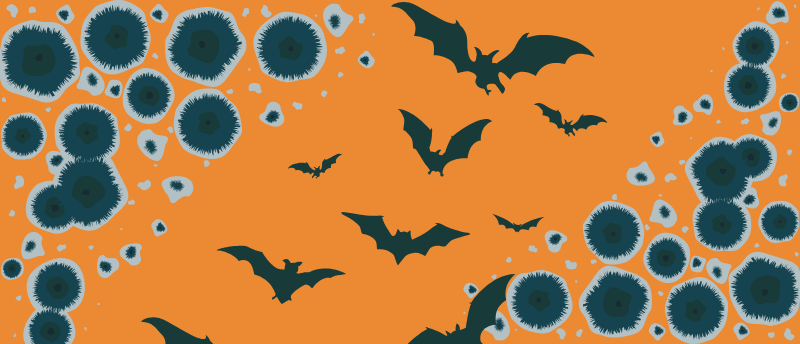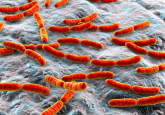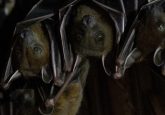What’s spookier than bats? Fungal infections

A treatment for white-nose syndrome could be on the horizon thanks to bacteria and fungi on bats’ own wings.
Researchers at McMaster University (Ontario, Canada) have sampled the wing microbiome of many species of bat in Lillooet, British Columbia (Canada), in the hopes of learning more about how white-nose syndrome (WNS) affects bats and how to stop it. WNS is diminishing the bat population in North America, and researchers are now turning to DNA metabarcoding to stop this.
WNS is a fungal infection of bat wings and muzzles that, since its discovery in New York (USA) in 2006, has been posing a greater and greater threat to bats, killing millions throughout Eastern North America. WNS is caused by a fungus that thrives in cold temperatures, called Pseudogymnoascus destructans (pd). The infection usually manifests as fuzzy white growth on bats’ noses and wings during hibernation when the bats are in their lowest metabolic and body temperature state. WNS wakes bats from hibernation, causing them to use precious fat reserves that leads to starvation.
Previous research has suggested that bats’ skin microbiome may play a key role in their susceptibility to WNS; however, we know little about it. Now, researchers have set out to investigate this microbiome more deeply. They focused their analysis on bats in Lillooet, a relatively small region known for its rich and diverse bat population, where fungal infections have yet to penetrate. This struck the researchers as rather unusual given that WNS is prevalent throughout Canada and the US.

Resurrecting secrets about the real-life Dracula
Vlad III, the historical figure who inspired the literary vampire Count Dracula, did not drink blood, but he may have cried it…
The team captured 76 bats in Lillooet, testing their skin microbiomes using bacterial 16S rRNA metabarcoding and fungal internal transcribed spacer metabarcoding to identify the thousands of bacteria and fungi present. Previous testing demonstrated several bacterial strains that appear to be able to fend off pd. Building on this research, the current study further tested four of the previously identified strains and showed that these strains would be more effective against pd if in concert.
Following their analysis, the team – in collaboration with scientists at the Wildlife Conservation Society of Canada (Ontario, Canada) and Thompson Rivers University (British Columbia, Canada) – mixed a probiotic cocktail that can be administered to bats to protect them from the infection as well as treat existing infection. This is just one of many treatment routes currently in development, including vaccines and fumigation.
“To develop a powerful probiotic cocktail that will work and will have an effect against the fungus in nature, we must understand the microbiome of the bats, or what exactly is on their wings,” commented Jianping Xu, senior author of the paper. “This kind of information will allow us to refine potentially region-specific probiotic cocktails and manipulate the microbiome to help the survival of bats.”





